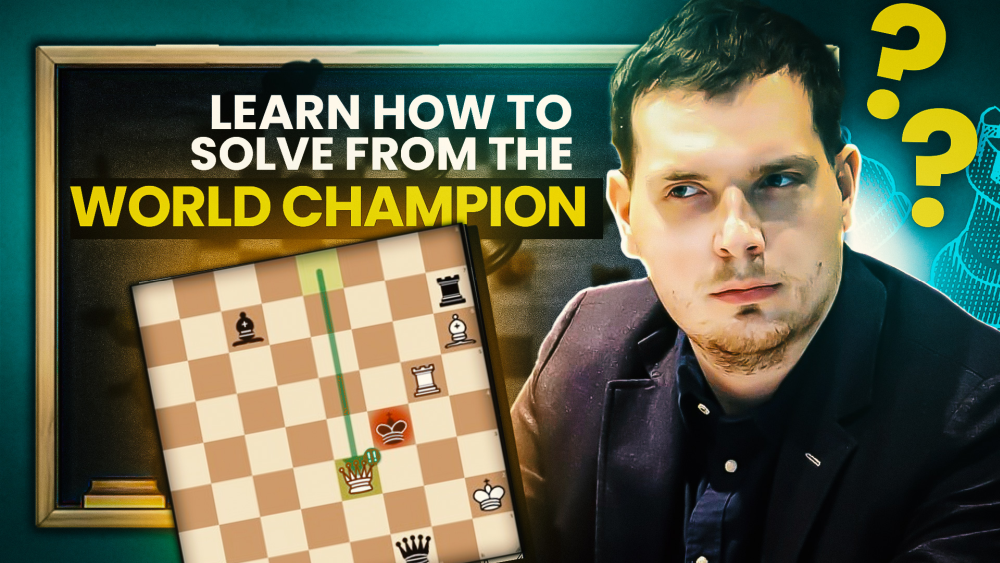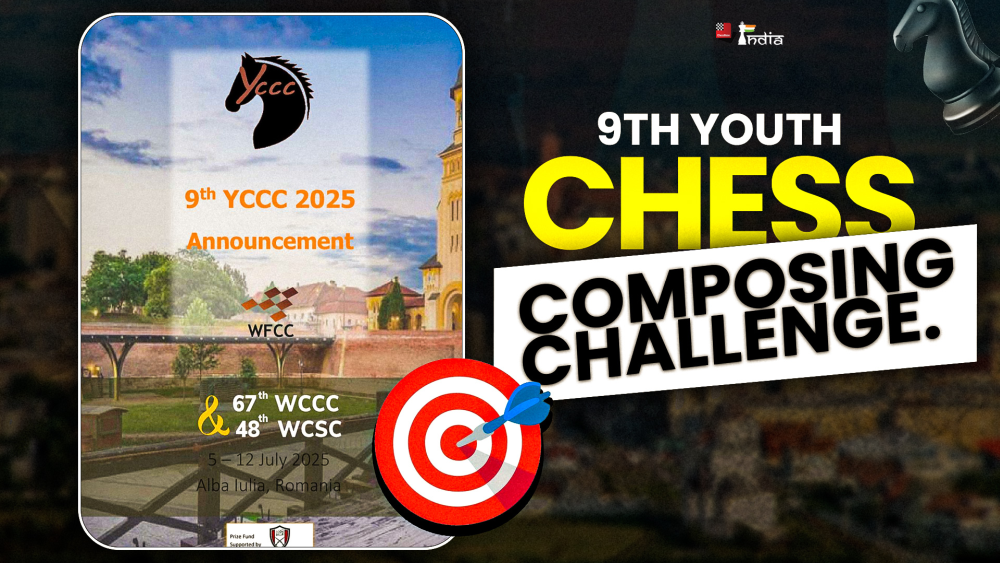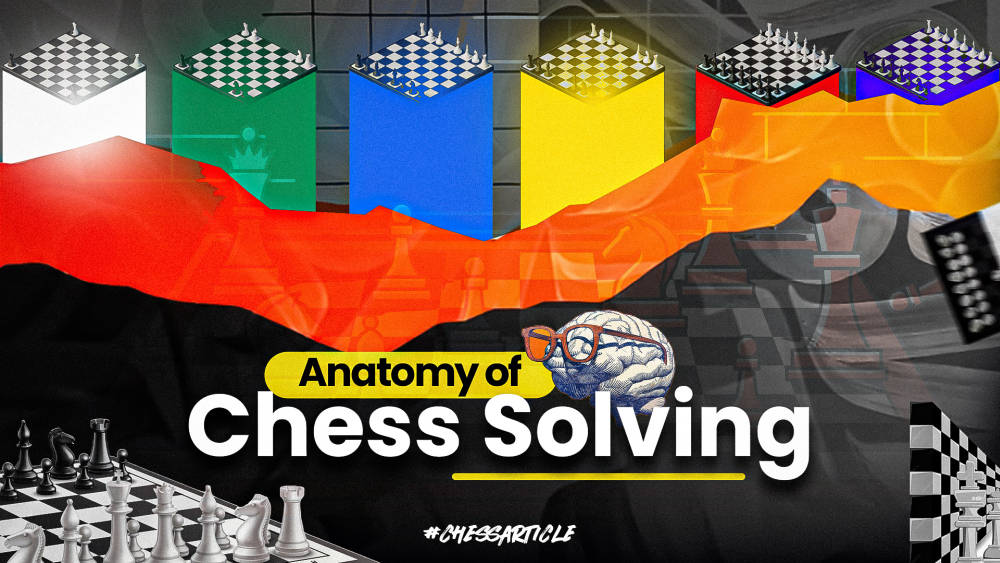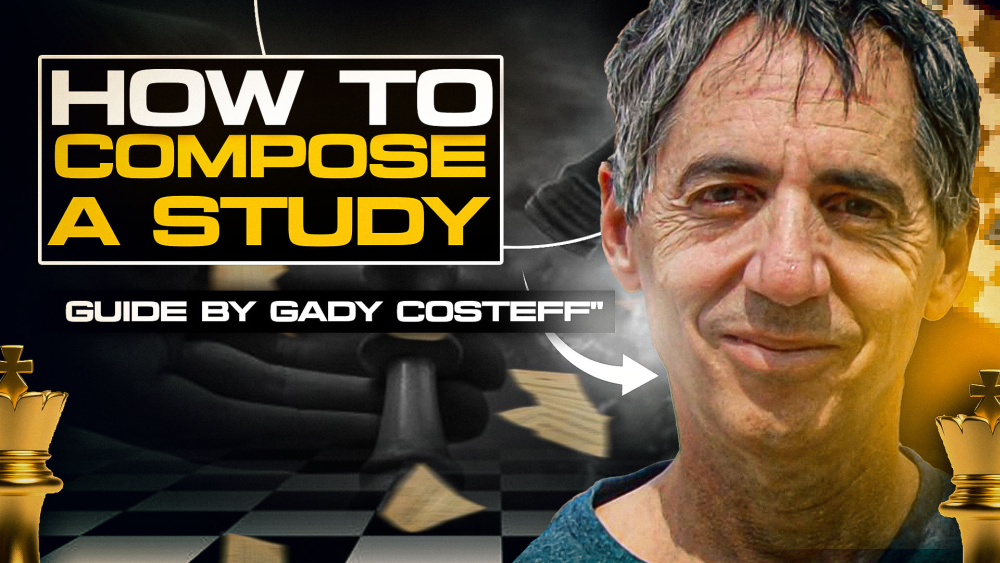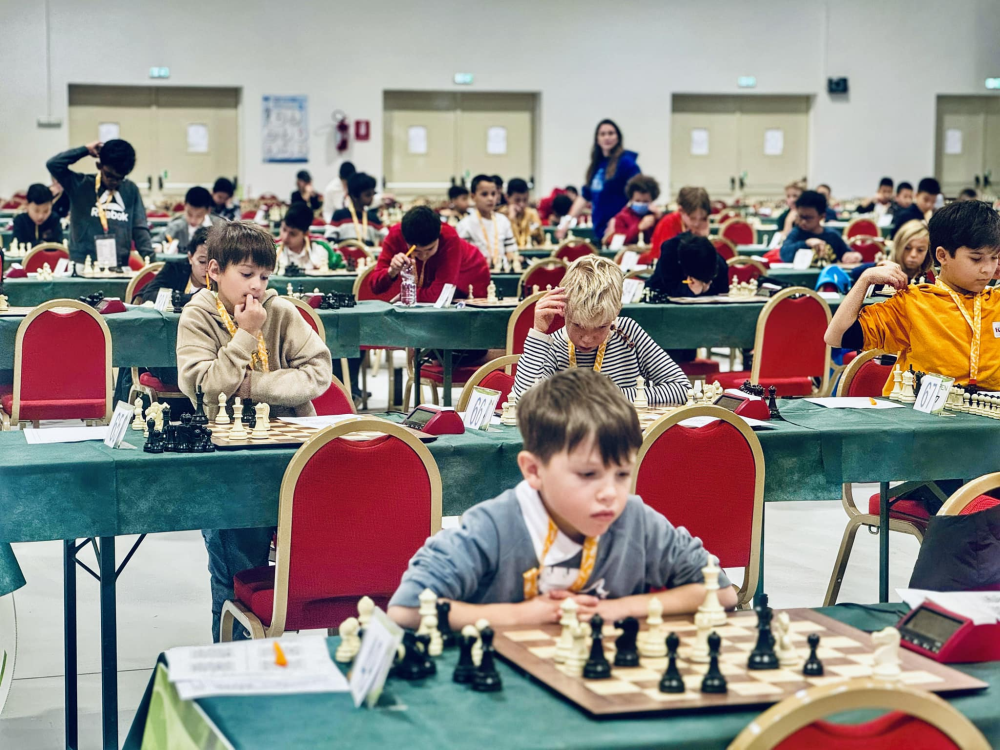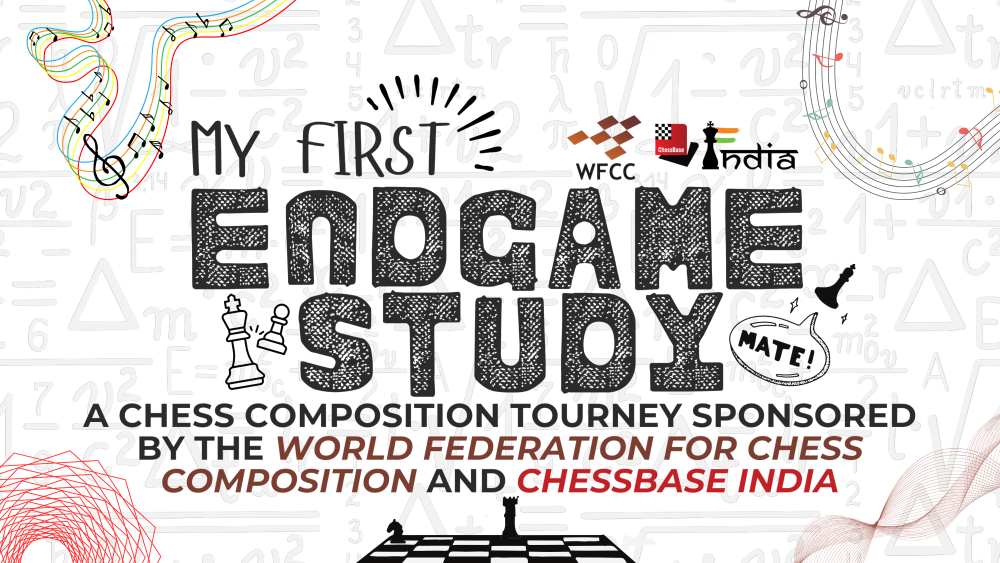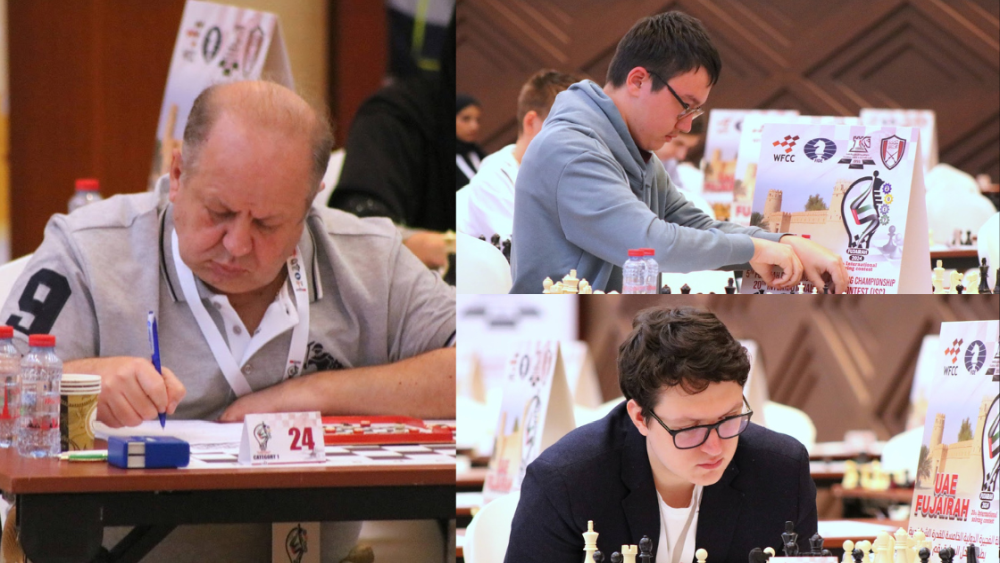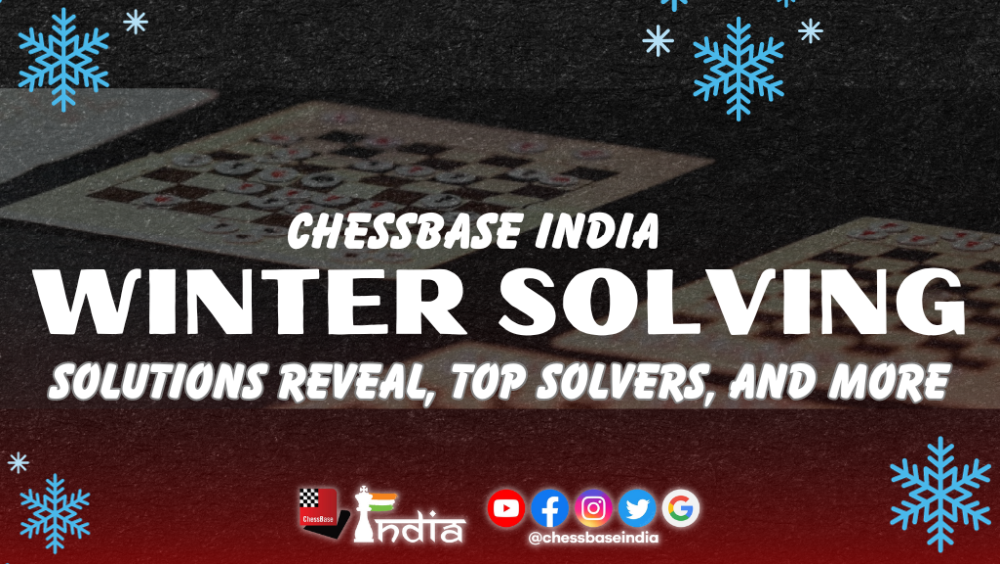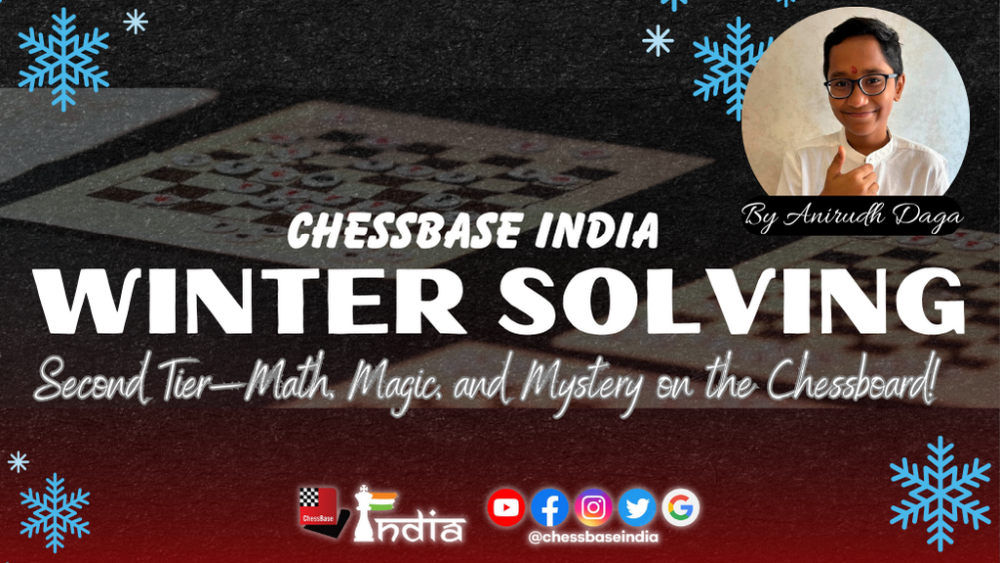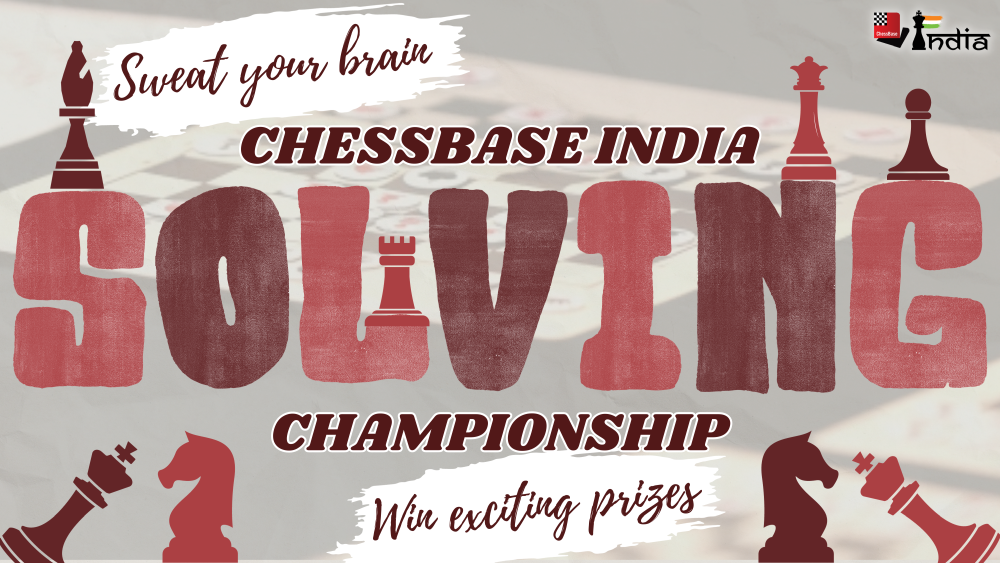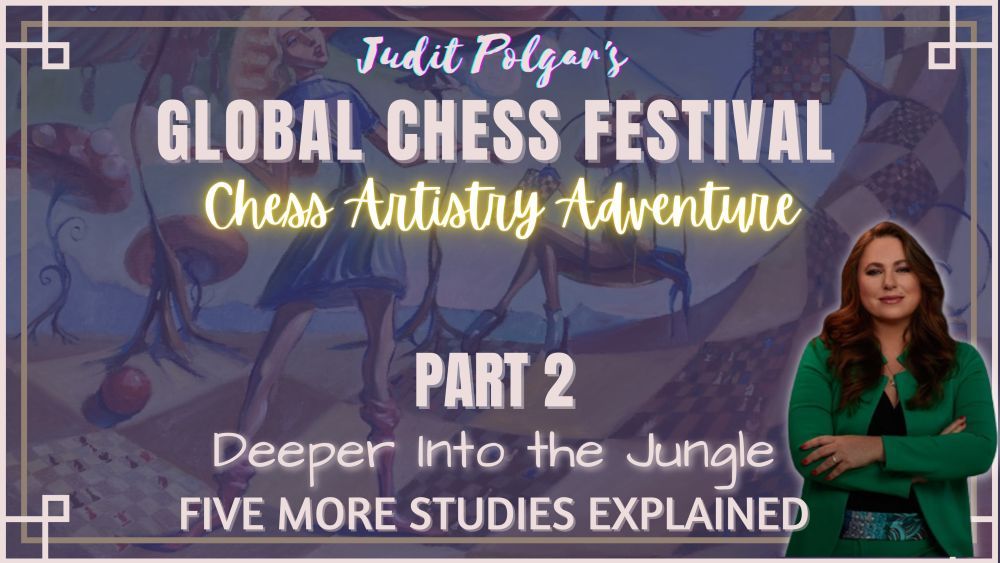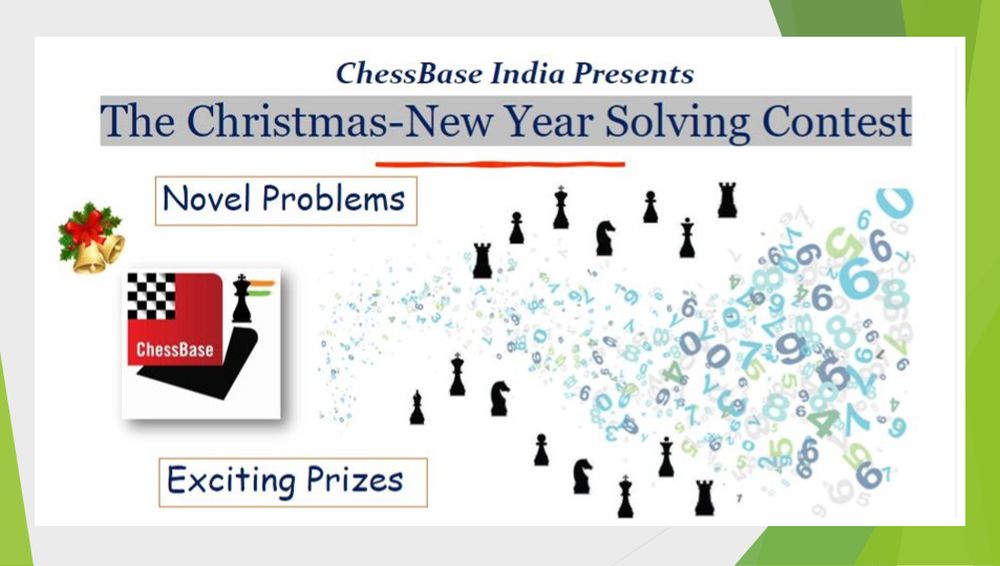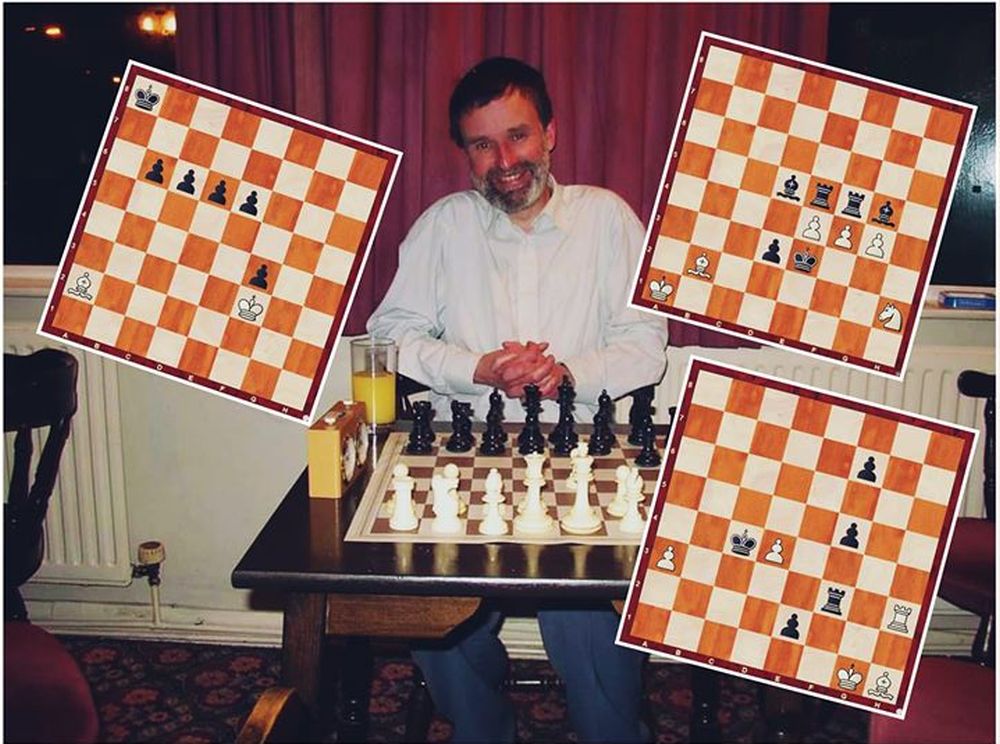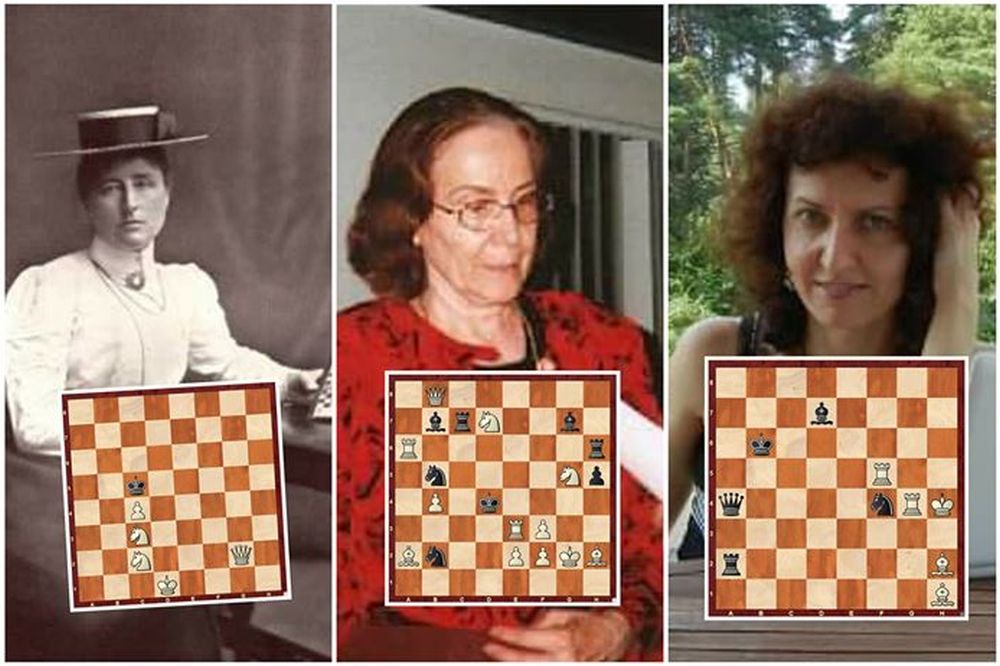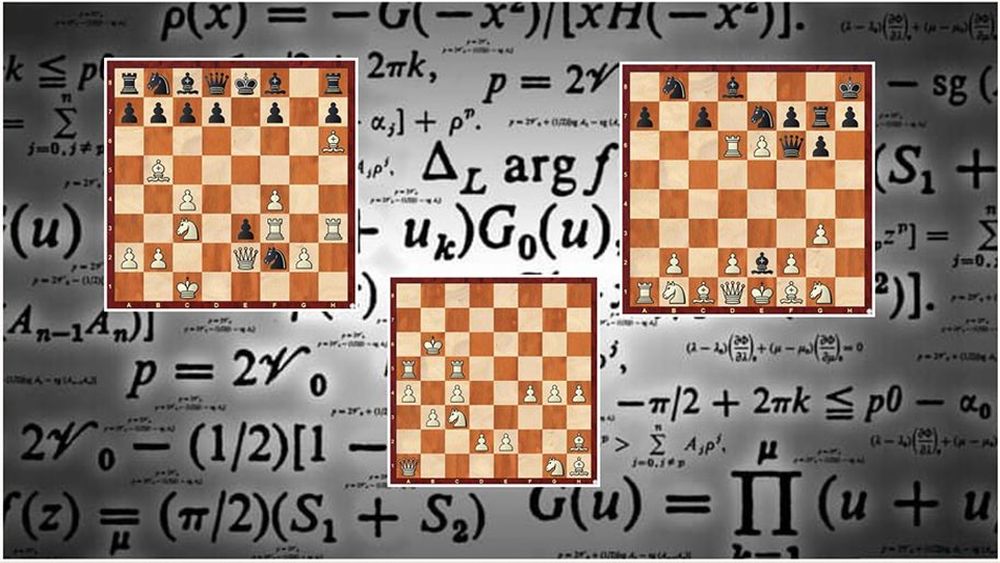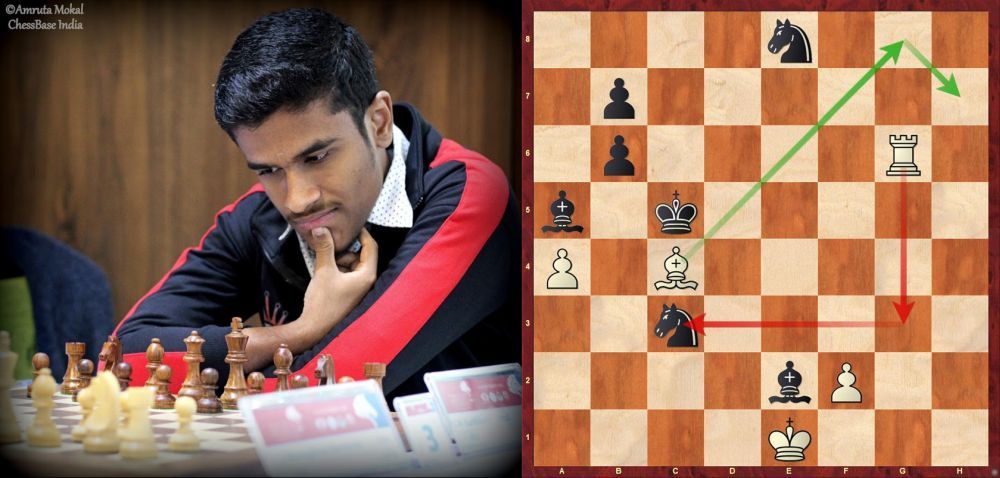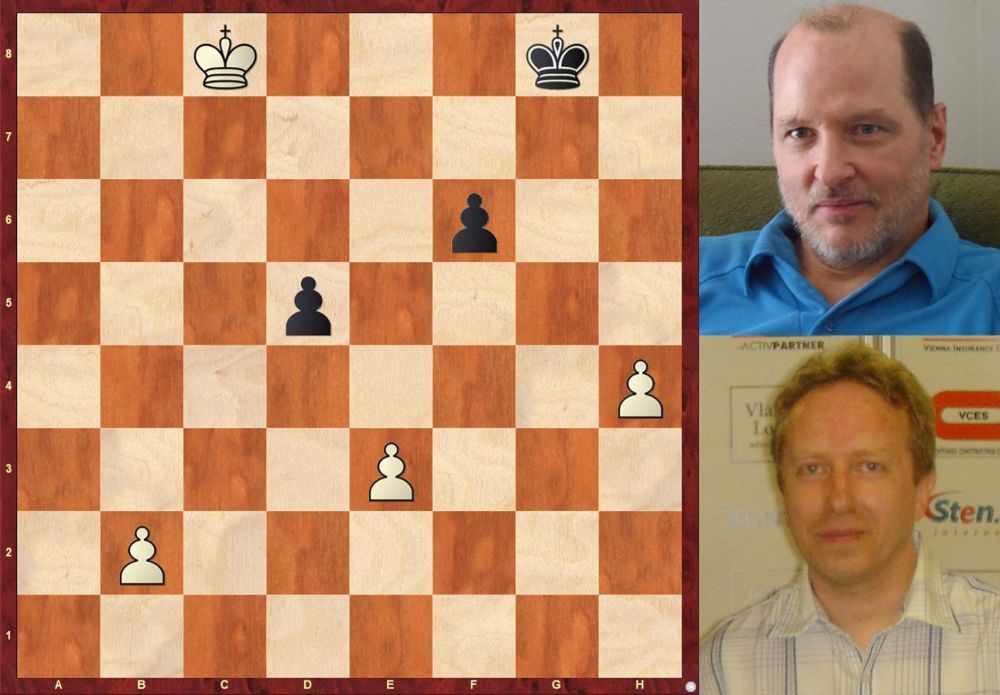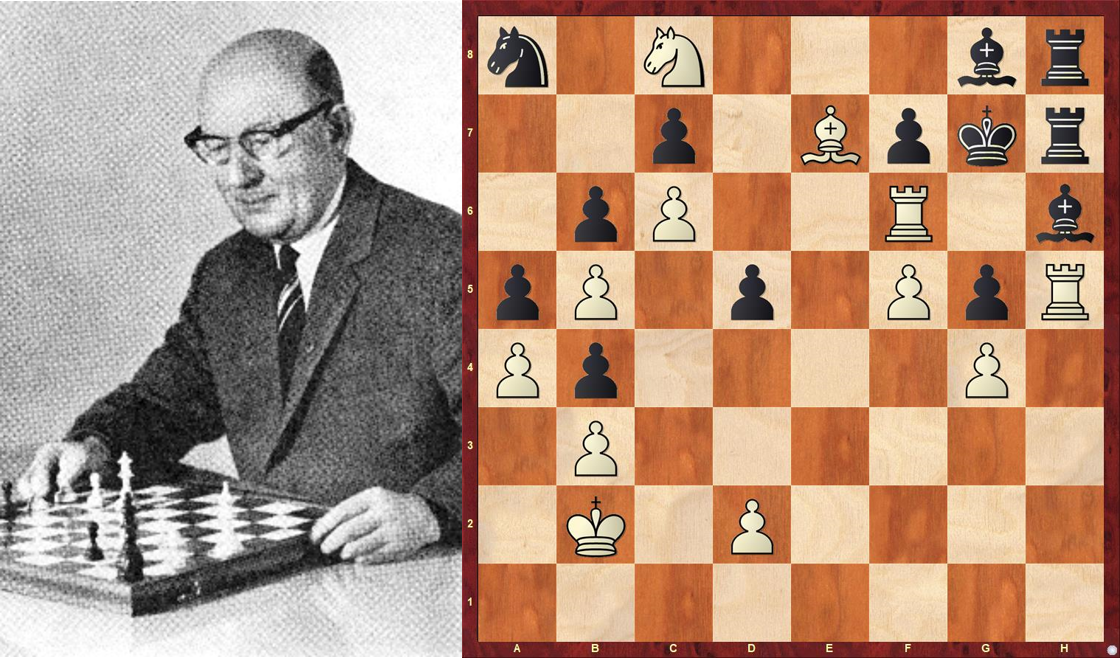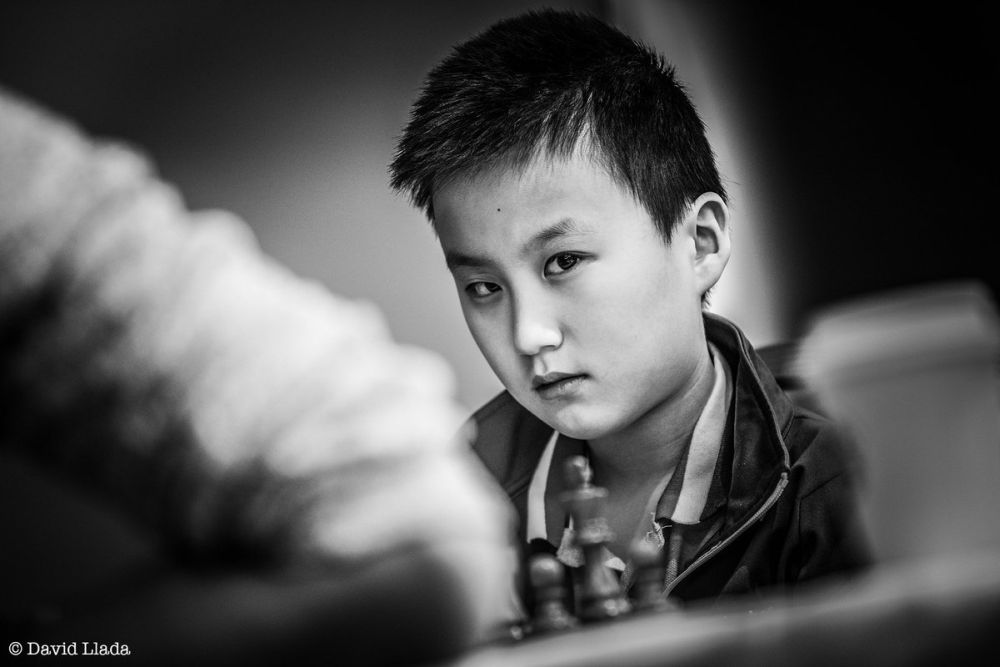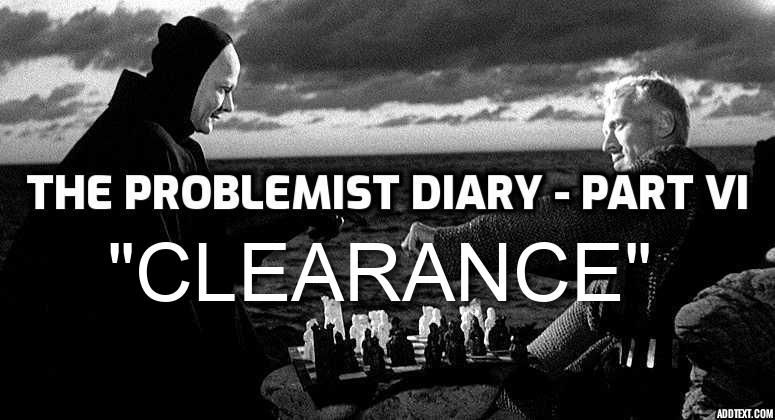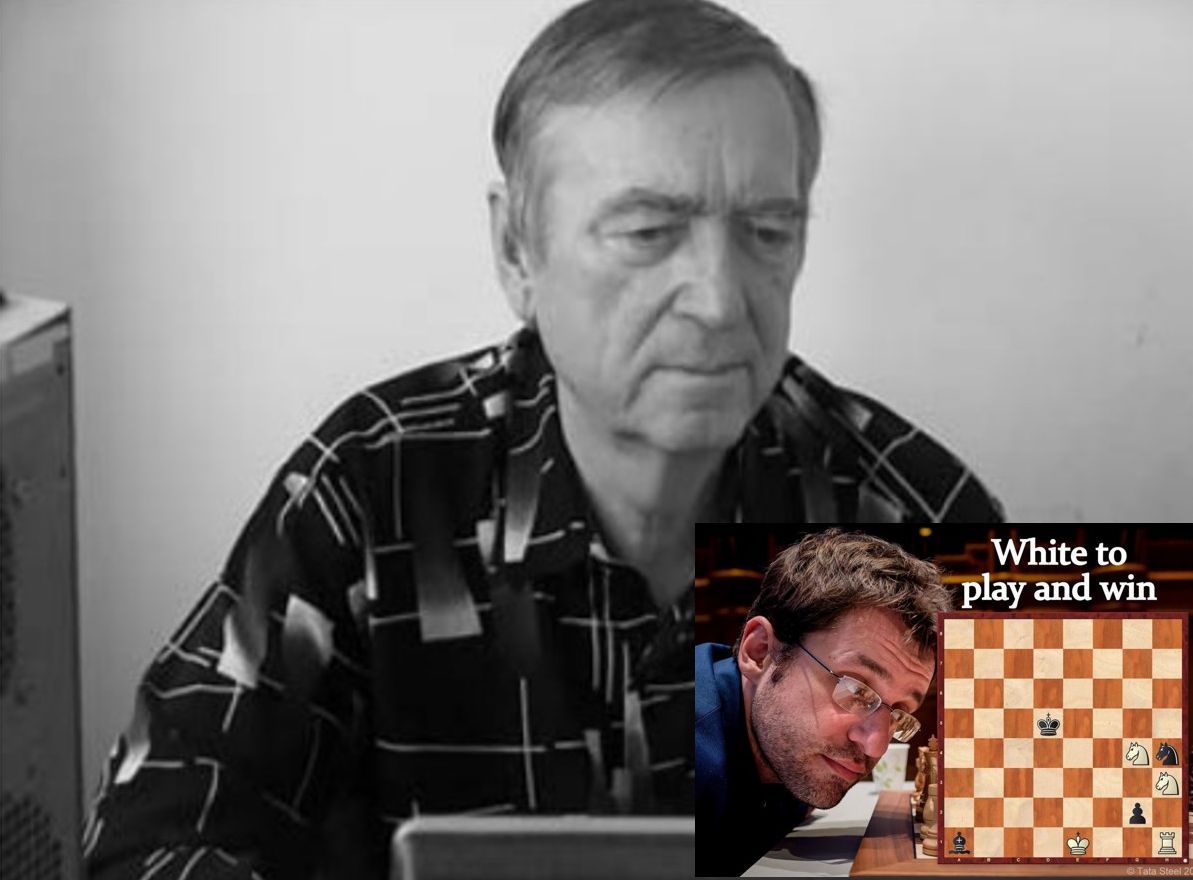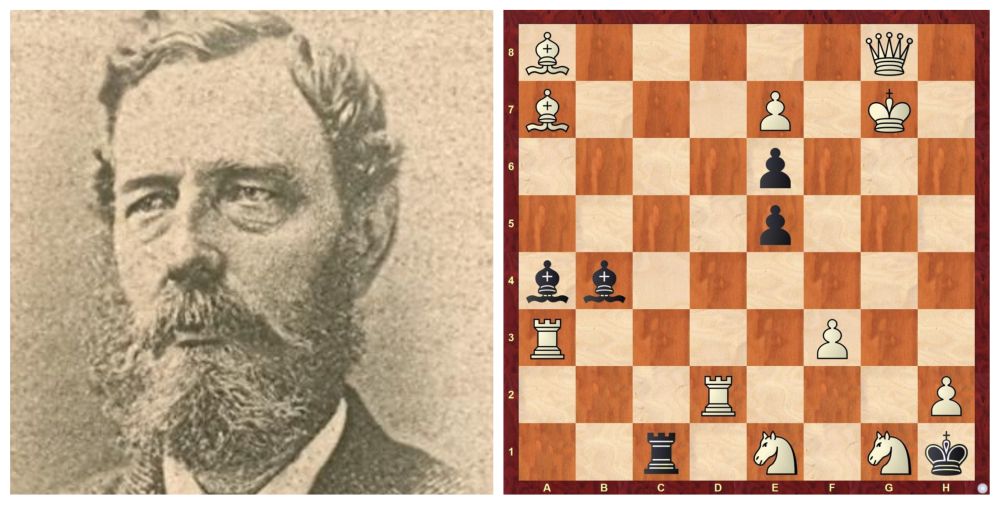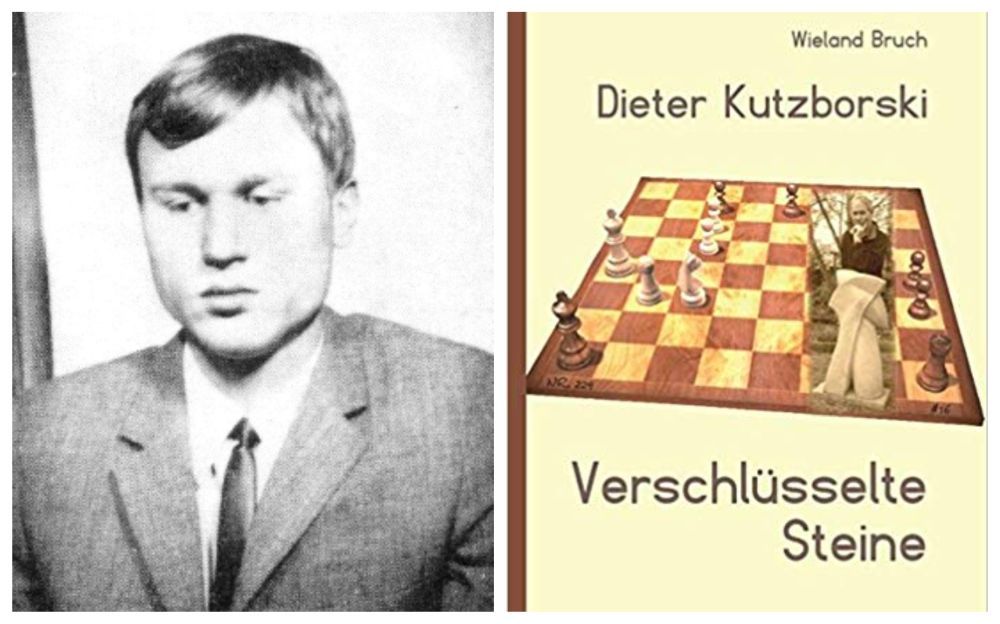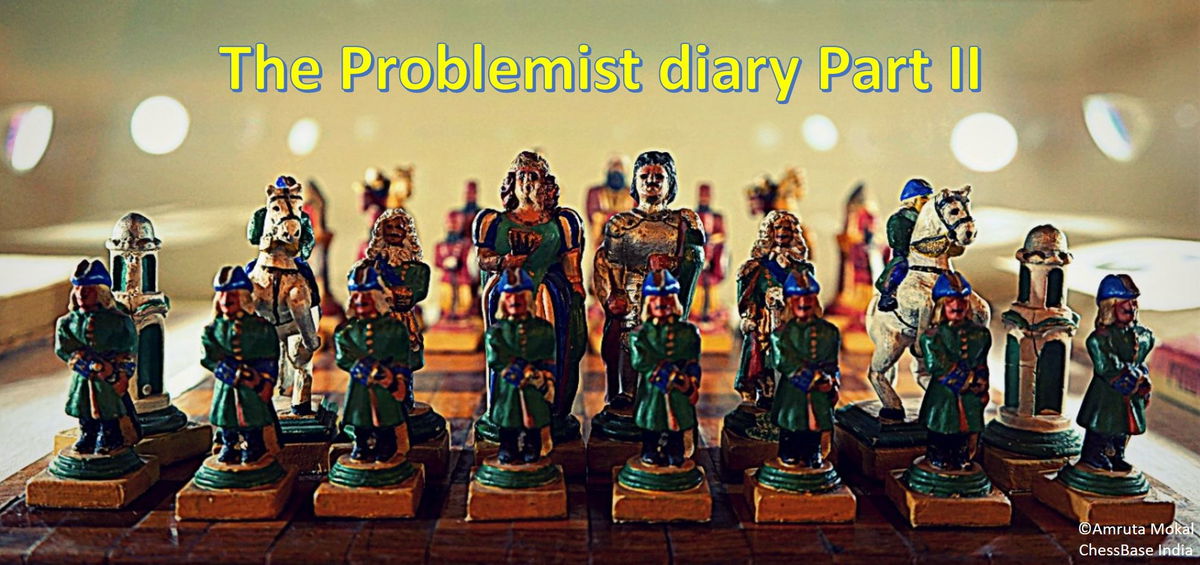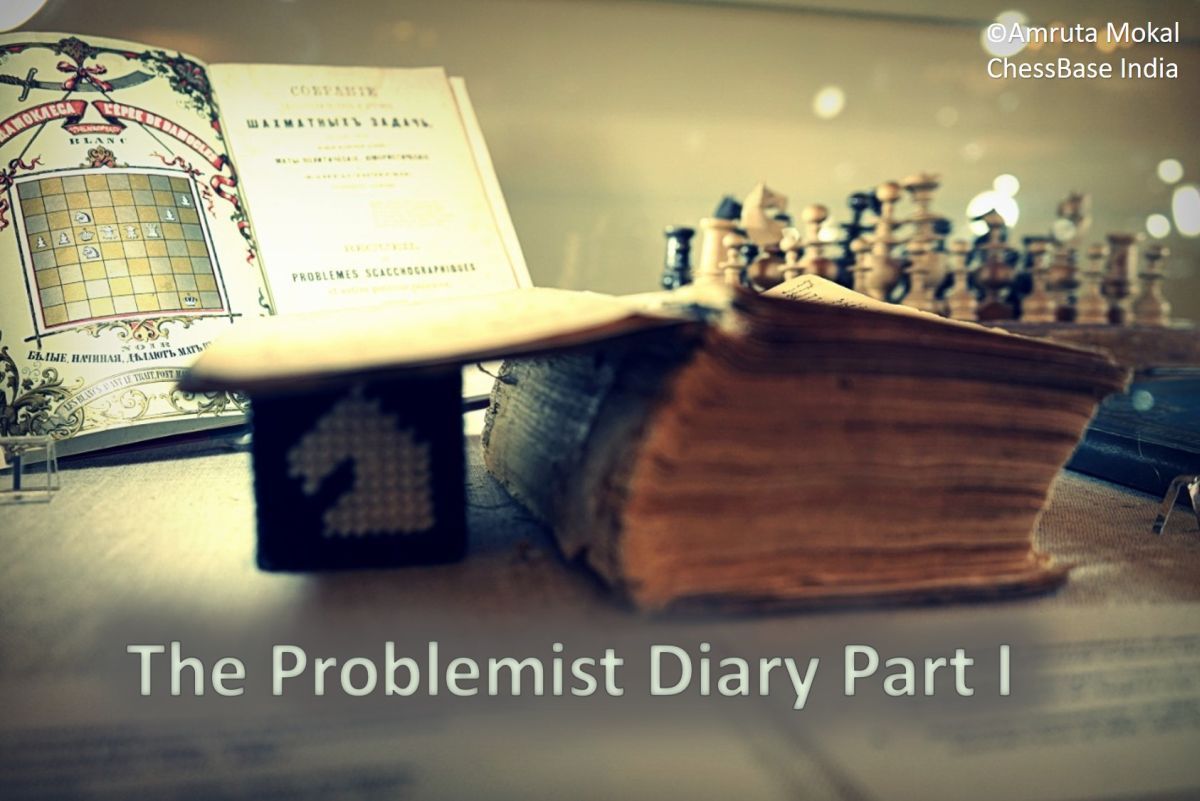Remembering György Bakcsi and his helpmates
The great Hungarian composer and Grandmaster György Bakcsi passed away on the 11th of this month at the age of 86. Bakcsi was a true creative giant who felt equally at home in many different genres of problem chess. Indeed, he also held the title of International judge for fields as varied as directmates, selfmates, helpmates, and even fairy problems! His multifaceted proficiency together with his disposition for sharp and paradoxical ideas made him one of the most loved composers of twentieth century. In this article we pay the deceased master our heartfelt tribute and discuss a few of his ever entertaining creations which will continue to be cherished for years to come.
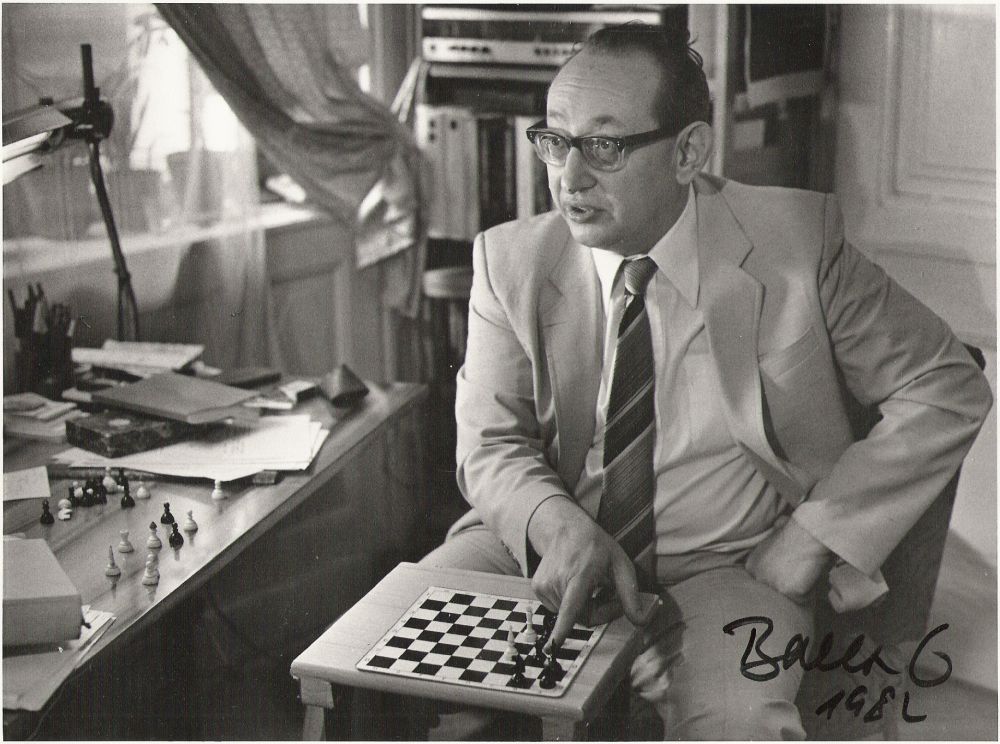
György Bakcsi was born on the 6th of April 1933 in Budapest, Hungary. By profession he was a literary historian and wrote several award winning monographs on the works of Russian authors such as Goncharov, Dostoevsky, Gogol, and Chekhov. He learnt the game of chess at an early age from his father and initially competed in various tournaments before realizing chess composition to be his true area of passion.
György Bakcsi, Marcius Tizenötödike 1948

Bakcsi began composing in 1948 and the above is probably one of his first efforts. The key of the problem is 1.b6! and it sets up a nice zugzwang. The black king has four escape squares at its disposal but a mate on the second move awaits irrespective of the choice. The variations are as follows: 1...Ka6 2.Nc5#; 1...K×c6 2.Bd5#; 1...Kc8 2.Nd6#; and 1...Ka8 2.b7#
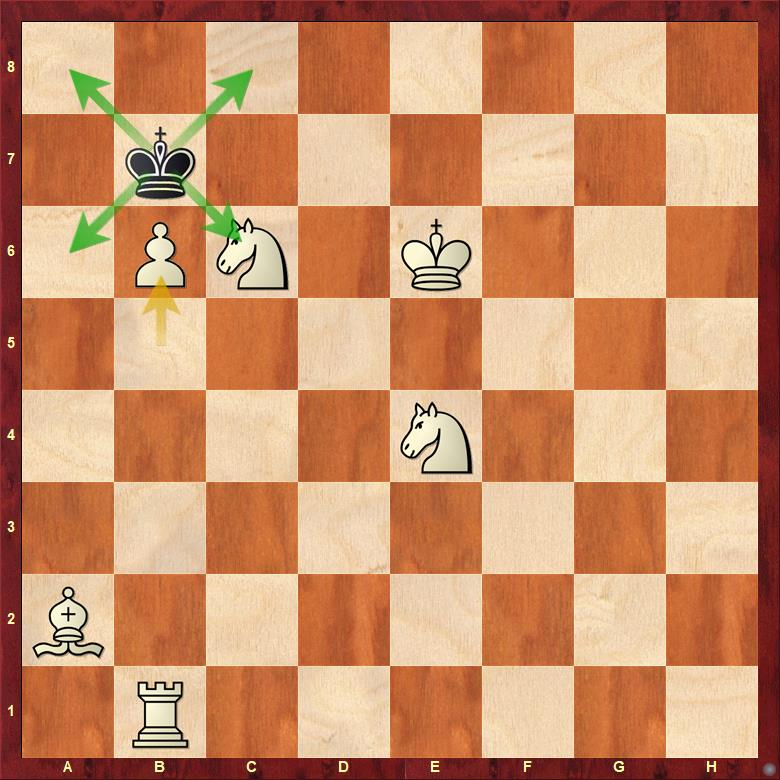
"A journey of a thousand miles", as they say, "begins with a single step". This was just the start of the prodigious outpour! Over the course of many decades Bakcsi composed more than two thousand problems in a very broad range of genres. In 1979 he earned the title of International Judge of chess composition and a year later also became a Grandmaster. Approximately two-thirds of his productions have received awards, including more than 500 prize awards and more than 200 First Prizes. He became the Hungarian champion a total thirty times, and was consequently elected the ‛Hungarian champion for life’. In 2002 he was awarded the Maróczy Prize of the Hungarian Chess Association, and in 2007 he was nominated for the Hungarian title ‘Sportsman of the Nation’, and as recently as in 2013 he was granted the title of the Knight of Caissa.

The hungarian wikipedia contains a wealth of biographical information on Bakcsi's early life. He lost his father Imre Bartók when he was just a ten-year-old and in 1945 his mother married a typewriter by the name of Béla Bakcsi, thus György took his step-father's name. He graduated from the Kölcsey Ferenc High School in 1951, and then did a year of preparatory studies in the Soviet Union at the Herzen College of Education in Leningrad which led him to join the Gondolat Book Publishing as editor-in-chief. Bakcsi edited the chess composition column of Sakkélet from 1976 until 1985 and also wrote many books about chess problems, among which "Gondolat es Strategie" (1970) and "En passant felugyelo visszater" (1985) are notable.
During the 1930s and 1940s Hungary was the hotbed of helpmate composing. No wonder Bakcsi took to this genre quite naturally and together with stalwarts such as Dr. György Paros, Aurél M Kárpáti and others, became one of its foremost specialists. Today in this article we are going to explore primarily some of these extraordinary helpmate compositions. We had introduced the genre of helpmates or cooperative mates in a previous article of ours. To just recall the definition, a helpmate is a problem where black moves first and both sides work together in unison to checkmate Black in the stipulated number of moves. Without further ado let us begin by looking at our first problem.
Problem 1
György Bakcsi, Magyar Sakkszövetség 1967, 2nd Prize
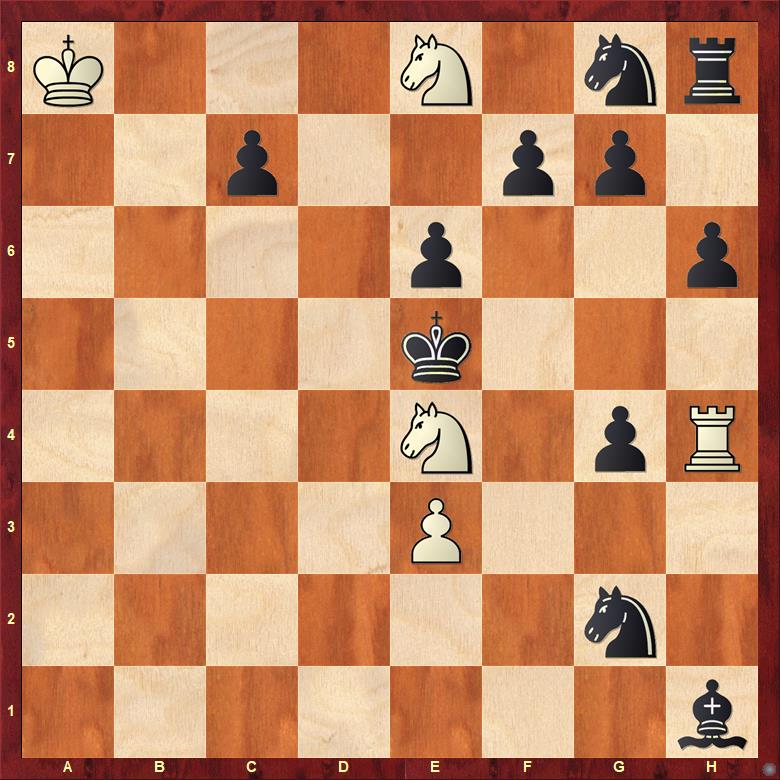
Helpmates often have multiple solutions to compensate for their lack of variations. But these solutions are generally characterized by a distinct thematic unity. In the above problem we see double masked batteries, one on the eighth rank and the other on the h1-a8 diagonal, both directed at the white king on a8. But what is their significance? The solutions are 1.Nf4 (pins the e4-knight) 1...N8f6 2.Ng6 Rh5# and 1.Ne7 (pins the e8-knight) 1...N4f6 2.Ng6 Rh5#, we see play on the same squares f6, g6, and h5 but with different set of knights. The knights actually exchange roles in two phases of play and the pins on the eighth rank and h1-a8 diagonal ensure that they work for one specific solution at a time.
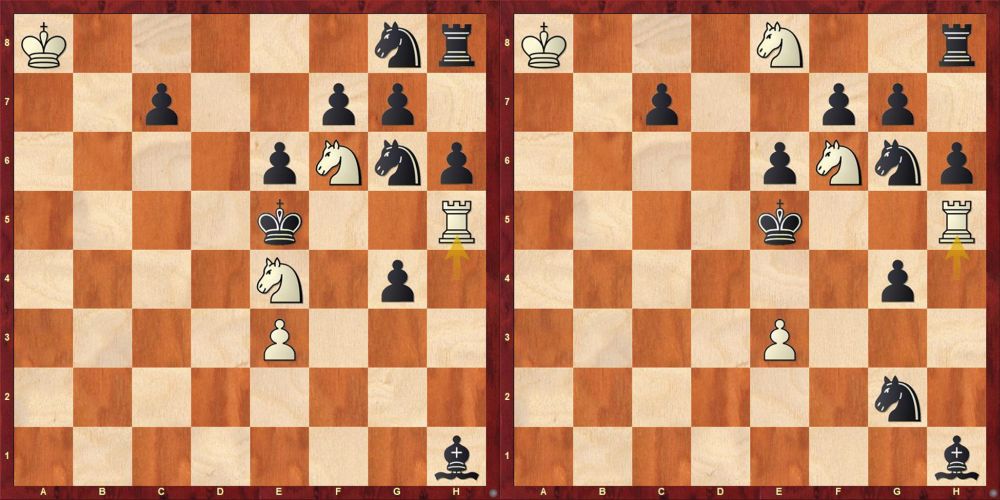
Problem 2
György Bakcsi, Magyar Sakkszövetség 1966, 1st Prize
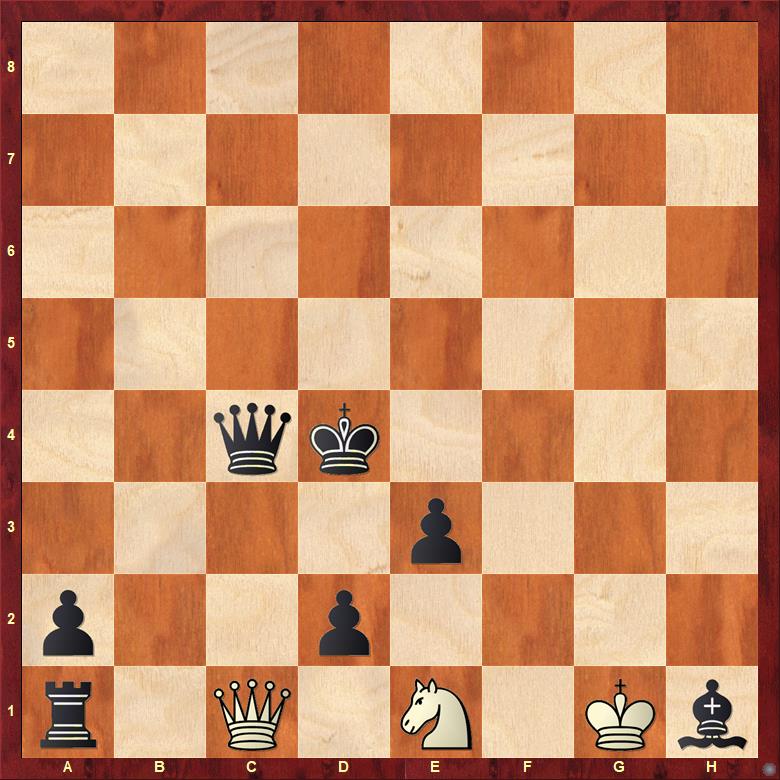
Another common way to add richness in help-play is by twinning. The above is a two-in-one problem, the first part is to find helpmate in 2 as usual in the given diagram and for the second part you remove the black bishop on h1 and achieve the same stipulation from the resulting position. A twin is just a second problem made from the given one by incorporating in it a small change!
The solutions (a) 1.Bd5 Ng2 2.d1=B (unpins the Q) 2...Q×e3# and (b) 1.Qd3 Qc6 2.d1=N (unpins the N) 2...Nf3# are homostrategic and show beautiful under-promotions with model-mates. In part (a) the h1 bishop serves as a nice self-blocking unit and in part (b) its absence facilitates a surprising exploitation of the undefended light-squares.
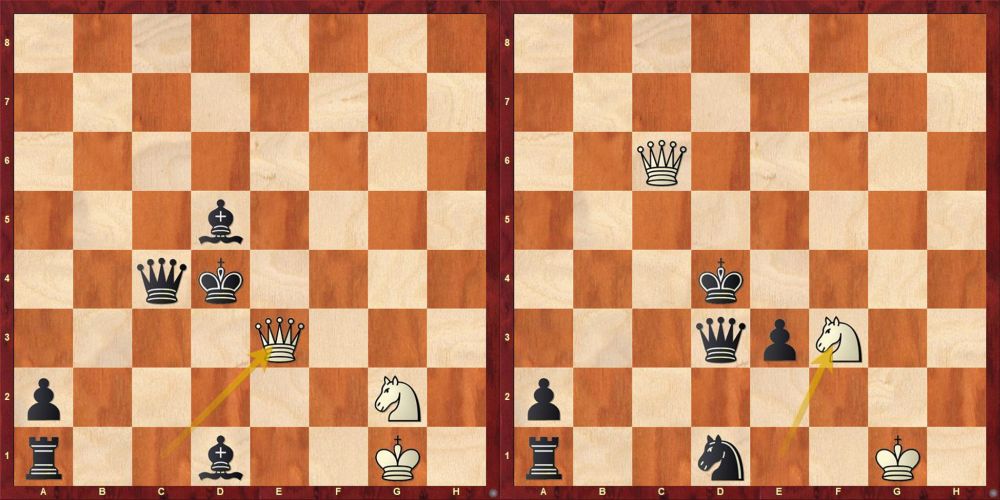
Problem 3
György Bakcsi, Probleemblad 1965, 1st Prize
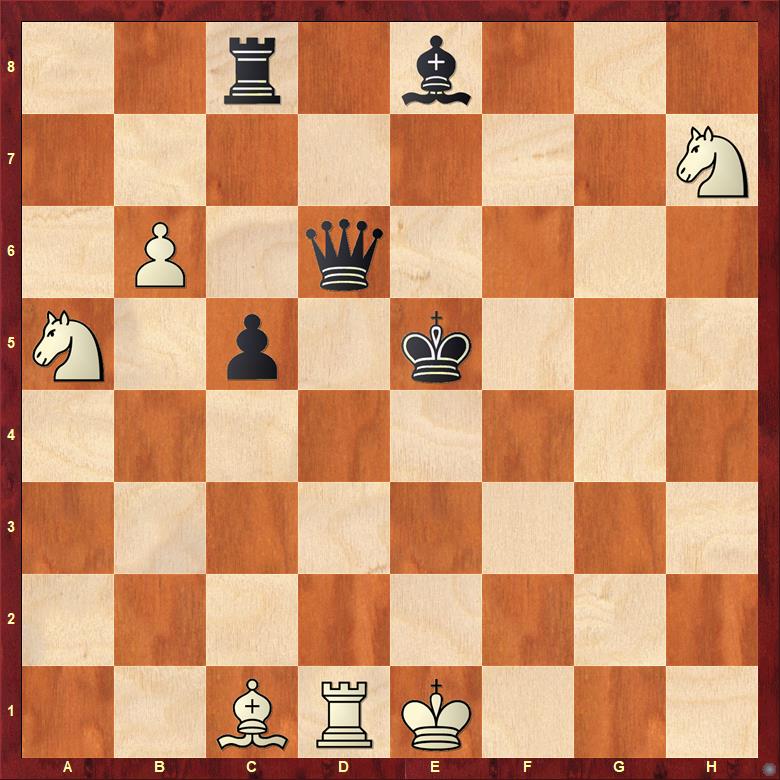
This is a four-in-one problem and the twinning is done by moving the b6 pawn to various squares on the board. The solutions nicely fit into each other like a jigsaw puzzle creating a harmonious impression: (a) 1.Ke6 Bg5 2.Kd7 Nf8#; (b) 1.Qd5 Nf8 2.Kd6 Bf4#; (c) 1.Qd4 Bf4+ 2.Kd5 Nf6#; (d) 1.Qd3 Nf6 2.Kd4 Bb2#... The black queen is successively pinned on the d-file and model pin-mates are achieved in the four phases of play. An exquisite achievement!
A small detour!
We have already mentioned that György Bakcsi excelled with equal merit in several genres of chess problems. It would be interesting here to quote something from Chris Feather's acclaimed book Black to play where two problems - one a directmate and the other a helpmate - of analogous thematic content are presented side by side.
György Bakcsi, Magyar Sakkszövestzeg 1959, 2nd Prize
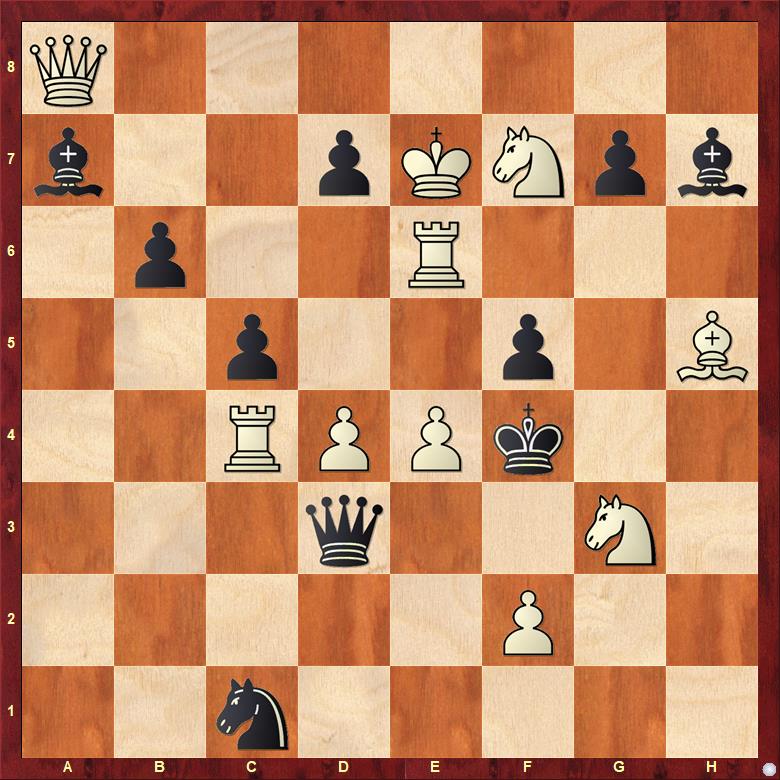
Solution: 1.Qd8! threatening 2.Qc7+ d6 3.Q×d6#
1…Qxd4 2.Ke8 Qf6 3.e5#;
1…Qxe4 2.Kf8 Qa8 3.d5#.
György Bakcsi, Sahs 1960, 1st Honourable Mention
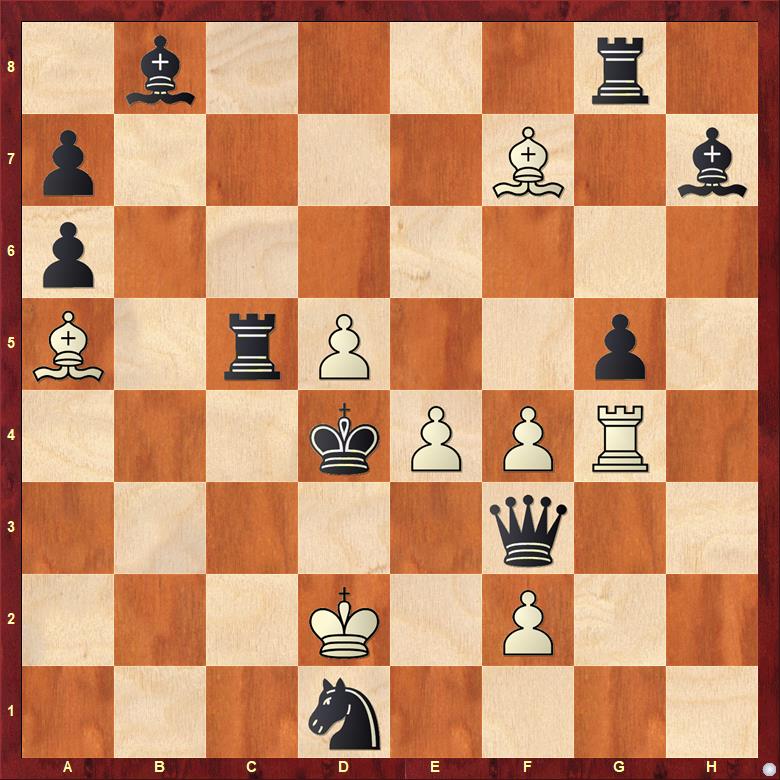
Solution: (a) 1.Q×e4 Bc7 2.Qg6 f5#;
(b) 1.Q×f4 Bg6 2.Qc7 e5#
The first one (above) is a "white to move and mate in 3" and came before the helpmate problem which was composed a year later in 1960. We quote the valuable comments of author Chris Feather directly from his renowned book: "The aim was to cause the BQ to capture each of the WPs in turn in two thematic lines and subsequently to move off in such a way that the other pawn can block its return and thus discover mate. What is interesting is the totally different means of achieving this in the two problems. In the directmate the BQ takes the pawns in order to place a guard on the diagonal of the threat, forcing the WK to choose his next moves carefully in order to avoid check. The BQ is lured beyond the critical squares (d5, e5) in order to restrain the WQ which, now that the BQ has lost the chance of taking on g3, has powerful threats of mating on g5 or h4...In the helpmate the BQ is only too willing to capture WPs to clear the way, something which in the directmate Black would have preferred to avoid. The composer’s main task is to prevent the BQ from being able to go somewhere else at Black’s second move, and especially from sacrificing itself to the remaining pawn. This explains the WK twinning (stopping e.g. 1.Qxf4 Bc7 2.Qf5 exf5 in the diagram position) and the presence of the BBs, which need shutting out and also prevent the BQ from hiding away on squares too far along the diagonals. While in the directmate e4 and g4 must be guarded by pieces with which Black cannot interfere, the corresponding squares in the helpmate (e4 & c4) need to be protected from guard (Bd5!) in order to prevent cooks, hence the WPd5".
Incidentally, Chris Feather himself is one of the greatest living helpmate composers of modern times and an admirer of Bakcsi's style of work too. His two books - Black to play and Selected Helpmates - are both very instructive and contain good many problems by Bakcsi and other Hungarians.
The aim of citing the above examples was to demonstrate how effortlessly Bakcsi could make the transition from one genre to the other, something that not many composers can boast being capable of. Next, we delve into helpmates of greater length. Longer problems allow composers to add more depth and explore more elaborate themes. Problem four is one of Bakcsi's many coproductions with compatriot László Zoltán who was a hydro engineer by profession. Zoltán was younger than Bakcsi but passed away in 2008.
Problem 4
Bakcsi & Zoltán, idee & form 1992, 2nd Honourable Mention
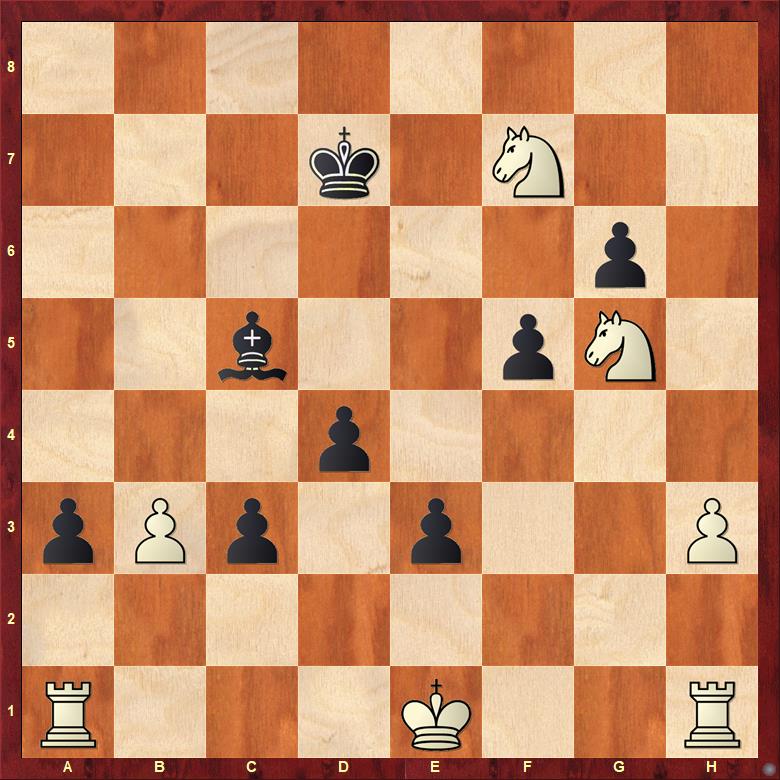
The above problem shows impressive application of castling and exchange of functions between the two rooks. 1.Ke7 O-O 2.Kf6 Rxf5 3.Kxf5 Rf1# and 1.Kc6 O-O-O 2.Kd5 Rxd4 3.Kxd4 Rd1# are the solutions. Notice how in the two solutions the rooks swap roles of getting captured and delivering the final mate - this is the famous Zilahi theme. A widely explored effect in helpmates! Moreover, we see that the black king gets mated on the same square where it captures one of the white rooks - this is the Kniest theme.
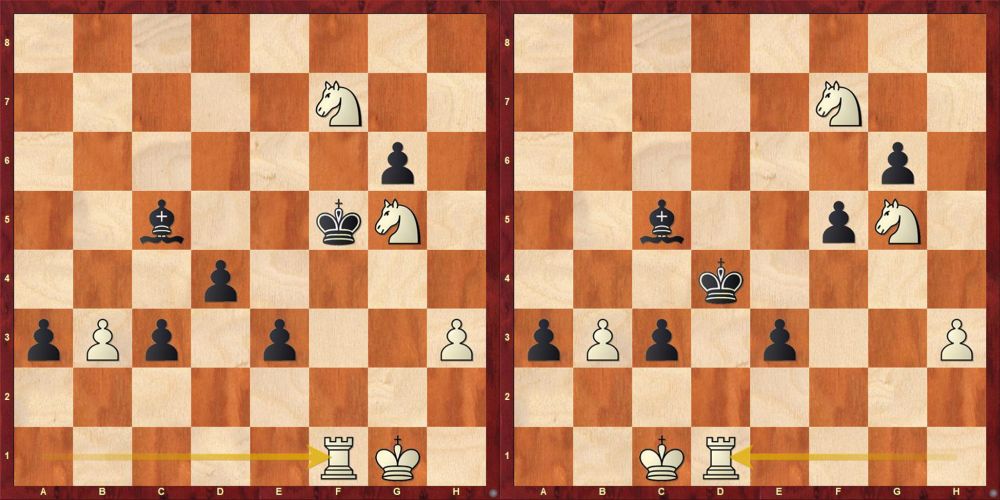
Problem 5
Bakcsi & Zoltán, 11°TT, Problem-Echo 1994, 1st Prize
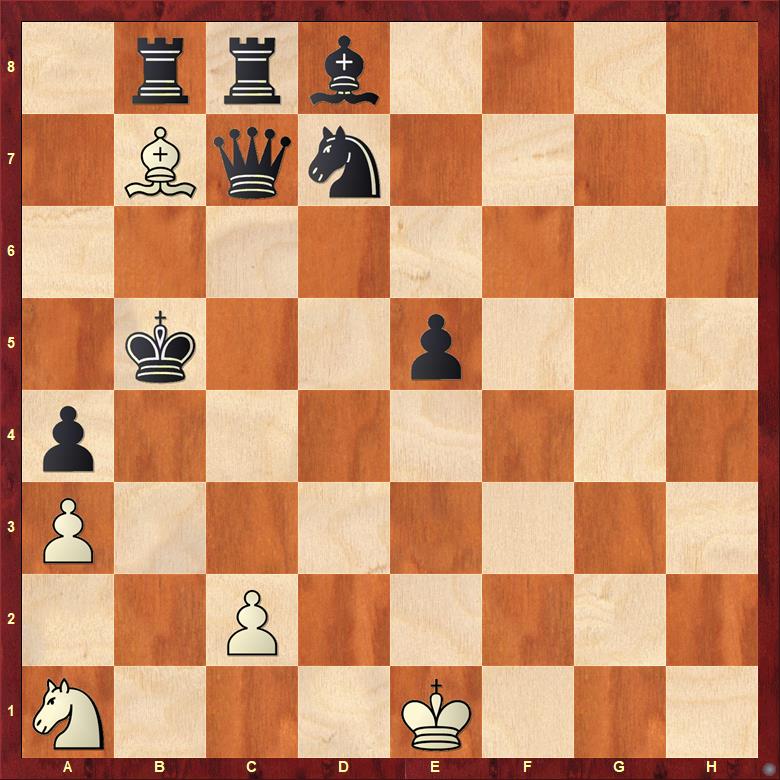
The above problem also made into the FIDE albums and therefore is quite special. In part (a) the c2 pawn gets to play a very important role, one might even say the most important role as it gets to deliver the checkmate: 1.Nc5 Nb3 2.Qa5+ Nd2 3.Bb6 c4# (Don't miss the Bristol clearance on d8-a5!)
But what happens in part (b) when c2 is removed? Well, now we have a square available for the a1-knight and here comes 1.Qc5 Nc2 2.Ba5+ Nb4 3.Nb6 Ba6#
Problem 6
György Bakcsi, 3rd FIDE Turnier 1962, 2nd Prize
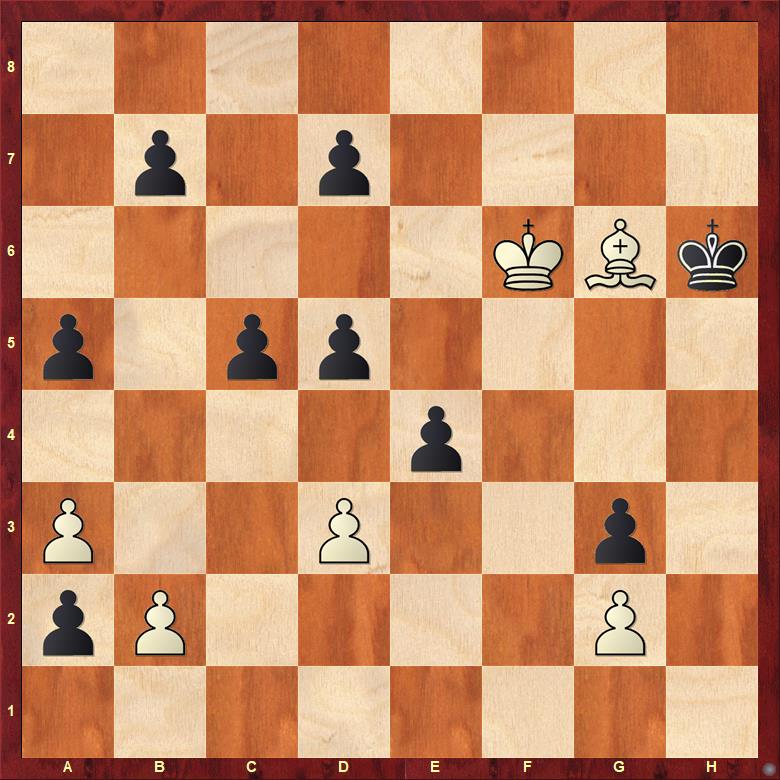
We now take on even longer compositions. This single solution helpmate in 5 is distinguished by its impeccable timing! The solution is the magnificent 1.a1=Q d×e4 2.Q×b2+ e5 3.Qb6+ e6 4.Qd8+ e7 5.Qf8+ e×f8=Q#. The white pawn and the promoted black queen do a delicate dance that is strategically as deep as visually satisfying! The next problem is something in the same vein...
Problem 7
György Bakcsi, Magyar Sakkszövetség 1979- 1980, Commendation
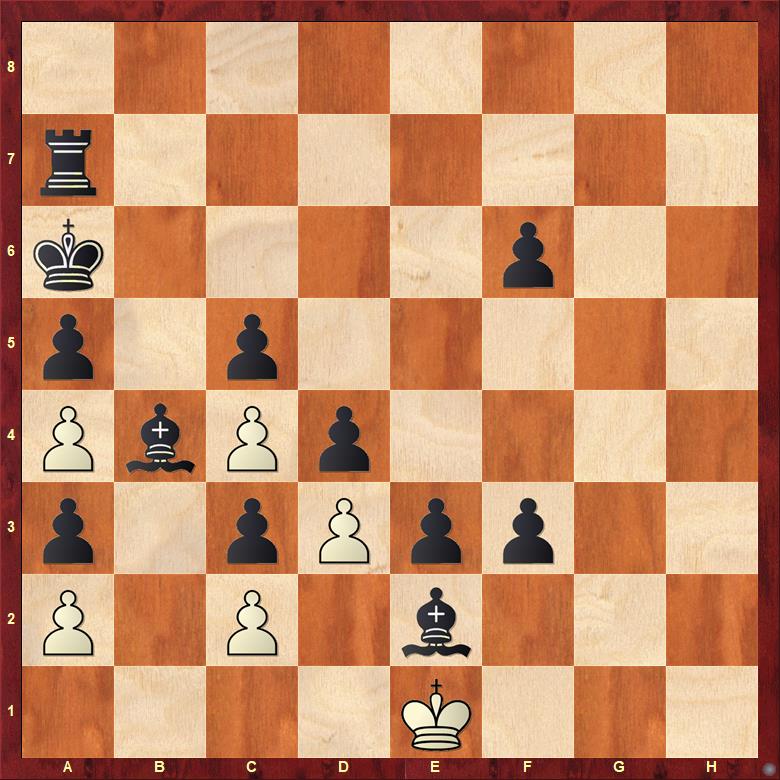
Solution: Once again we see a very sophisticated movement of a promoted piece with 1.f2+ K×e2 2.f1=B+ Kf3 3.Be2+ Ke4 4.B×d3+ Kd5 5.B×c4+ Kc6 6.Bb5+ a×b5# - notice how every black move in the play of solution is a check!
Problem 8
Bakcsi & Kárpáti, Europe Échecs 1961, Commendation
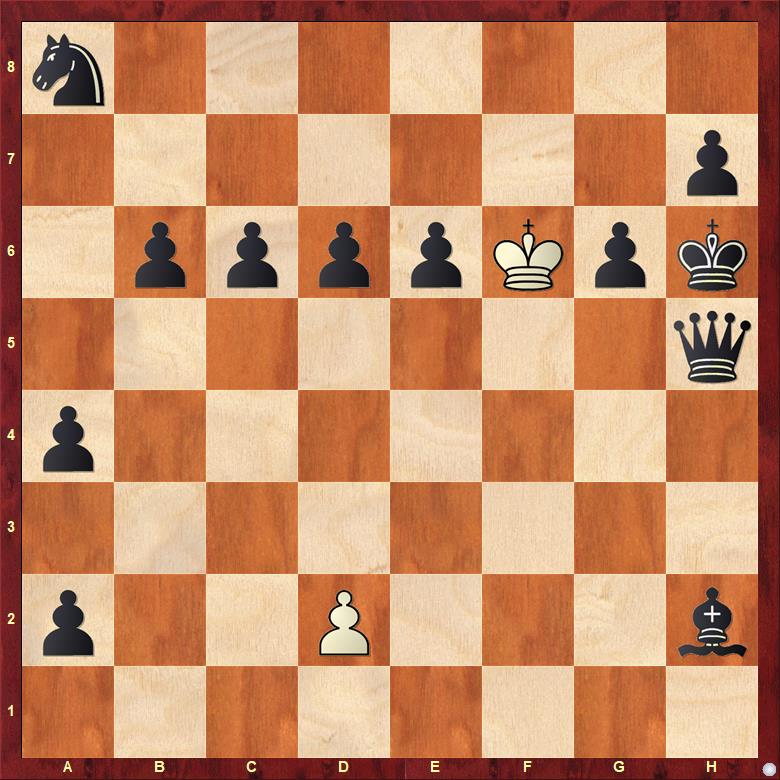
Our last example of this article is another coproduction, this time with Aurél M. Kárpáti. The above is a so-called minimal problem where white has only one unit (a pawn) along with his king as opposed to Black's large army. However, the forces will work in consonance here and "help" the white pawn on d2 to reach the last rank. In other words we have an excelsior task on our hands. The solution is the delightful 1.a1=Q+ d4 2.Qad1 d5 3.g5 dxe6 4.Qf7+ exf7 5.Qh5 f8=Q# where the h5 queen is replaced by a promoted doppelganger!
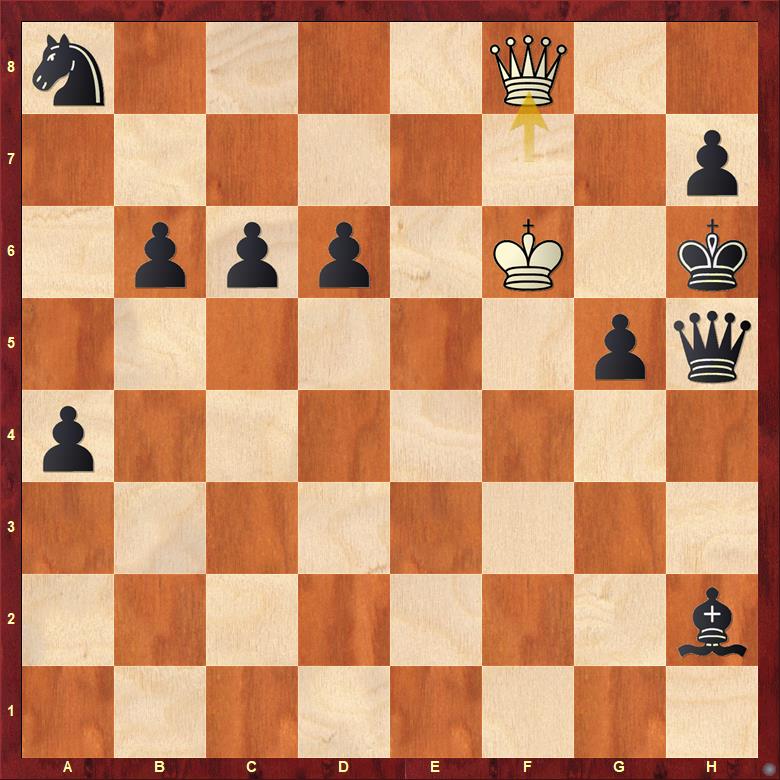
We hope you enjoyed going through the problems in this article. Of course, it is not possible to touch on all aspects of Bakcsi's compositions in a brief write-up like this but hopefully this might serve as the starting point of a more extensive exploration. György Bakcsi was truly an extraordinary artist. He is no more among us but his rich oeuvre of thousands of gems continues to become more and more popular. He will certainly continue to live on among enthusiasts and up-and-coming problemists through his many immortal creations.
A problem for you to try!
György Bakcsi, Die Schwalbe 1967, 1st Prize
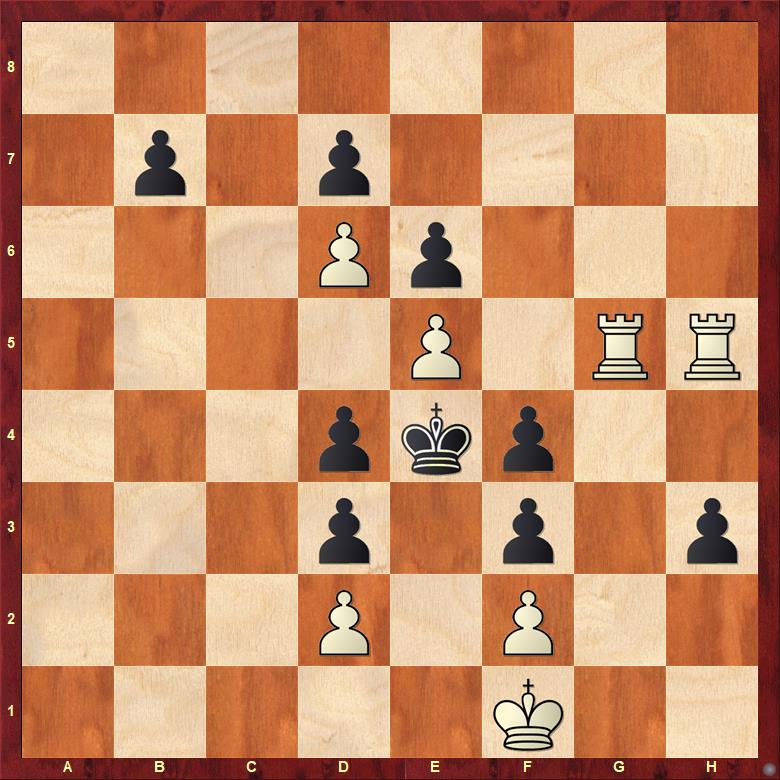
Before signing off, we pose a problem to you. The above is a helpmate in four with only one solution. Some very clever ambushing and doubling maneuvers take place here. Do make sure to give it a try and comment your ideas below!
About the author

Satanick Mukhuty is an author and social media manager at ChessBase India. He has a background in Mathematics. He is an avid enthusiast of composition chess and is sincerely committed to promoting it around the world.





